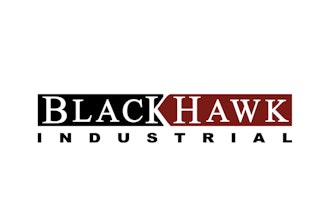Innovation is required if the United States is to regain the level of productivity that it enjoyed toward the end of the 19th Century through the mid-20th Century. However, innovation by itself is not enough. Just as our parents and grandparents adopted electricity, the automobile, credit cards and airplanes in the period from 1870-1950, businesses and organizations of the 21st Century must embrace change.
This is one of the conclusions of the McKinsey Global Institute Report on Productivity, prepared by McKinsey & Company in February 2011. “U. S. infrastructure is not only inadequate to meet the needs of a dynamic, growing, and productive economy, but its quality has been in relative decline. The United States today ranks 23rd (among worldwide economies) in the quality of its infrastructure. There is major scope for the United States to identify and implement leading-edge practices from project selection to financing and delivery, sometimes through public-private partnerships,” the report stated.
An area that is singled out by McKinsey as a potential significant contributor to greater productivity is the implementation of business and technology innovations that will improve supply-chain integration and how goods and services are provided to customers. Integral to this are best procurement practices.
These practices must facilitate communications and collaboration, in a transparent way, between the buyer and vendors. They also must automate workflow and establish accountability among all participants, and they must be adaptable to a customer’s changing needs.
To be more specific, timely processing and production must be ensured from the moment an idea is conceived to when the finished product is packaged, delivered and invoiced. Delays must be avoided. Duplication of orders and tasks also must be avoided by using one communications and workflow system. The same system, with related processes and procedures, must make it possible to maximize efficiencies so work can be done by the vendor during peak and off-peak periods. Throughout, communications must be clear to avoid wasting time and inventory and service errors.
Fundamental to the success of such a procurement approach is establishing trust between the buyer and the vendor. This is one of the problems with traditional procurement methods because often the buyer is simply making a decision based on pricing or perhaps a personal relationship. Through procurement innovation, such as the automated vendor selection technology, the buyer thoroughly screens each vendor. Approved vendors then are added to the buyer’s pool of vendors. Once in the buyer’s vendors pool, the vendor remains to compete for all job opportunities for which it is qualified. The ideal number of vendors in a pool is a couple of dozen with varying capabilities so all the buyer’s job needs will be met at a moment’s notice.
Automated vendor selection is a process that is as quick as the click of a computer mouse. The computer then compares the buyer’s detailed job specifications with the capabilities of vendors in the pool, and, subsequently, the vendors best qualified to do the work are invited to bid realizing that low bid wins. Bids of 25% to 50% lower than standard rates are typically submitted because the winning vendor has identified non-scheduled production time during which the job can be done at lowered rates. All tasks and communications are managed and archived by the web-based communications and workflow system that powers the automated vendor selection process.
This is the type procurement innovation that organizations must adopt if productivity gains are to be realized.
While procurement by itself will not boost U. S. productivity, procurement is an important ingredient if the United States is to regain productivity levels with fewer workers, less investment capital and growing worldwide competition – all pressures never before experienced to the degree that they are being felt today.
About the Author and e-LYNXX Corporation
William Gindlesperger is a nationally recognized entrepreneur, inventor, author and consultant. He founded ABC Advisors and its successor, e-LYNXX Corporation, in 1975. Profit, non-profit and government organizations alike have benefited from his strategic insight and innovation that result in measured and substantial cost reduction.
e-LYNXX Corporation patented the technology integral to e-commerce. Endorsed by Educational & Institutional Cooperative Purchasing (E&I) and Printing Industries of America (PIA), e-LYNXX drives results through its three divisions. For more information, visit www.e-LYNXX.com.


















